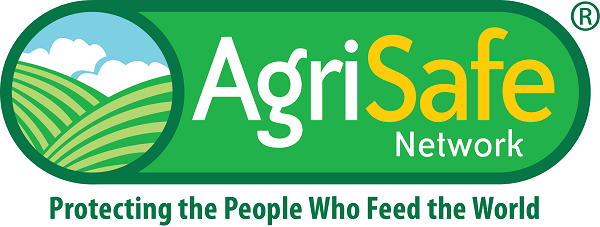AgriSafe Learning
Anhydrous Ammonia Safety for Farmworkers (March 31, 2021)
Recorded On: 03/31/2021
- Registration Closed
Summary: Anhydrous ammonia (NH3) is an effective nitrogen crop fertilizer used throughout the Midwest and beyond. Anhydrous ammonia is potentially dangerous, as it seeks water from the nearest source, which may be the human body – especially the eyes, lungs, and skin because of their high moisture content. Few problems occur when anhydrous ammonia is handled properly and applied as intended. However, it is important for all individuals working with this type of fertilizer to understand the potential health risks, necessary safety precautions, and proper response in the event of an exposure.
Personal protective equipment (PPE) is one of the last lines of defense for workers against Anhydrous Ammonia injuries. Women in all industries, including agriculture, have trouble finding and purchasing respiratory protective equipment that fits and is safe and comfortable wear. The National Safety Council, in a 2019 publication of Safety and Health, reported OSHA documentation indicating the lack of a full range of PPE, as well as, employers’ limited knowledge of PPE designed for women – as some of the reasons for the difficulty. Focus of the training is on anhydrous ammonia safety during transport and application, including the anatomy of the nurse tank and toolbar, safety inspection processes, hitching and unhitching safety, personal protective equipment (PPE), rural roadway safety, and first aid/emergency procedures. Hazard communication and emergency action plans will also be addressed.
Intended Audience: Farm/Ranch owner and operators, health and safety professionals, safety officers or specialists, managers, supervisors, safety coordinators, health safety and environmental interns and any person or persons who serve as safety personnel in an agricultural setting.
Objectives: At the conclusion of the program, participants will be able to...
- Identify the anatomy of a nurse tank and toolbar
- Choose appropriate personal protective equipment (PPE)
- Make use of a safety inspection process
- Describe safety measures to follow during anhydrous transport and application
- Apply rural roadway safety measures
- Describe hitching and unhitching safety
- Plan and utilize basic first aid/emergency procedures
- Locate hazard communication plan and emergency action plan resources
This material was produced under grant number SH-99084-SH0 from the Occupational Safety and Health Administration, U.S. Department of Labor. It does not necessarily reflect the views or policies of the U.S. Department of Labor, nor does mention of trade names, commercial products, or organizations imply endorsement by the U.S. Government.
Dan Neenan, MBA, Paramedic, Fire Instructor
Director
National Education Center for Agricultural Safety
Dan Neenan, MBA -joined the NECAS staff in August of 2002 as Director. Dan is a Paramedic, Firefighter II and EMS instructor. He is currently a member of the Iowa Propane Board. Vice Chair of the Dubuque County Emergency Management Commission, Treasurer, Dubuque County EMS.
In his work at NECAS, Dan has developed several OSHA-approved training programs as well as Agricultural rescue programs. Safety programs include viticulture safety, enology safety, confined space-grain bin entry, Prevention of grain storage fire and explosions, chemical safety, and confined space-manure pit entry. Rescue programs include tractor rollover, combine auger rescue, grain bin rescue, manure pit rescue, and anhydrous ammonia emergency response. To date, the Grain Bin Rescue courses have saved 43 lives nationally.
Key:
| Access Date | Quiz Result | Score | Actions |
|---|
Quick Search
Technical Difficulties
Submit a help ticket if you need technical assistance.
Having Computer Issues? Please check your internet browser and security settings to allow permissions for this website. Browsers: Microsoft Edge version 40 or higher; Chrome version 60 or higher, Firefox version 50 or higher; or Safari version 10.1 or higher. We recommend using Google Chrome or Firefox as your browser.
